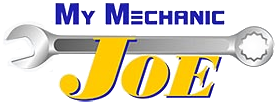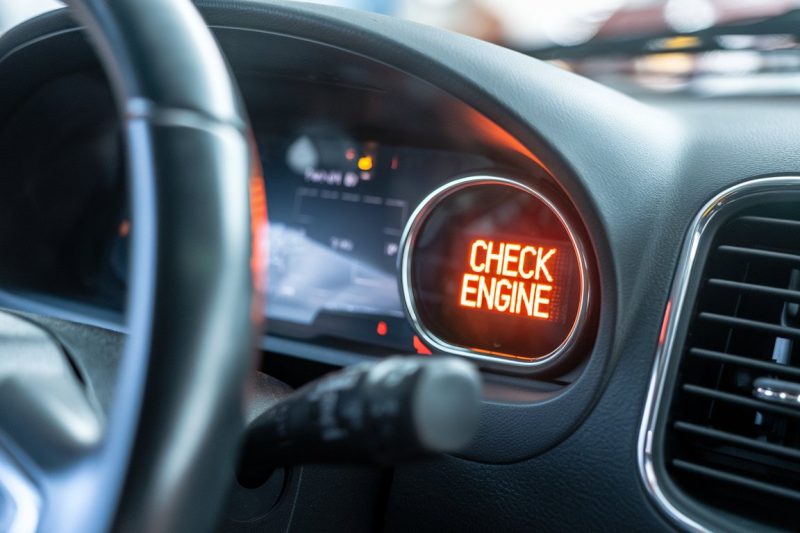The check engine light is a familiar yet often misunderstood warning indicator on modern vehicles. When this little light illuminates your dashboard, it can evoke a mix of anxiety and confusion for drivers. What does it mean? Is it urgent? Should you pull over immediately? Understanding the nuances of check engine light warnings is crucial for maintaining your vehicle’s health and ensuring your safety on the road. This light can indicate various issues, from minor problems like a loose gas cap to more severe engine malfunctions that could lead to costly repairs if left unaddressed. By demystifying the reasons behind the check engine light and exploring how to respond effectively, you can take proactive steps to safeguard your vehicle’s performance and longevity. Join us as we delve into the world of check engine lights, empowering you to confidently navigate these warnings. The check engine light (CEL) is one of the most recognizable indicators on a vehicle’s dashboard, yet it often elicits confusion and concern among drivers. This small, illuminated symbol can signify a wide range of issues, from minor inconveniences to serious mechanical failures. Understanding what the check engine light means and how to respond can save you time and money and potentially prevent further damage to your vehicle.
When the CEL activates, it alerts you to potential problems detected by your car’s onboard diagnostic system, which monitors various engine components and performance parameters. These can include anything from a loose gas cap to more complex issues like faulty oxygen sensors or catalytic converters. Ignoring the warning can lead to decreased fuel efficiency, increased emissions, and costly repairs down the line.
In this article, we will delve into the common causes of check engine light warnings, how to interpret the signals your vehicle is sending, and the best steps to take when faced with this common automotive alert. Whether you’re a seasoned car enthusiast or a casual driver, understanding your check engine light can empower you to maintain your vehicle effectively and ensure a smoother, safer ride.
When the check engine light illuminates your dashboard, it can be a bit alarming. This small but powerful light is an important indicator that something is amiss under the hood. Addressing its warnings promptly can help you avoid serious vehicle problems and costly repairs. Understanding why this light comes on and knowing how to respond can keep your car in optimal condition.
The check engine light triggers for various reasons, ranging from minor issues like a loose gas cap to significant problems such as a failing catalytic converter. It’s crucial to pay attention to this warning and act accordingly rather than dismissing it as a minor inconvenience. Taking the necessary steps to diagnose and rectify the problem can help safeguard your vehicle’s performance and longevity.
Regular maintenance plays a significant role in preventing the check engine light from turning on. By keeping up with routine inspections and following the manufacturer’s maintenance schedule, you can identify and fix potential issues before they become serious. Let’s dive into the key aspects of understanding and responding to check engine light warnings to keep your vehicle running smoothly.
Common Reasons Your Check Engine Light Comes On
Table of Contents
- 1 Common Reasons Your Check Engine Light Comes On
- 2 How to Respond When Your Check Engine Light Is On
- 3 The Role of Diagnostic Tools in Identifying Issues
- 4 Preventative Measures to Avoid Check Engine Light Warnings
- 5 What does the check engine light mean?
- 6 Why is my check engine light flashing?
- 7 How can I diagnose the issue when the check engine light comes on?
- 8 What should I do if my dashboard lights turn on?
- 9 What are the common reasons for a check engine light to come on?
Your check engine light can turn on for several reasons, some more common than others. One of the simplest causes is a loose gas cap. If the gas cap isn’t tightened properly, it can cause fuel vapors to leak out and trigger the light. It’s an easy fix – just tighten the cap until it clicks, but neglecting this can affect your fuel efficiency and cause other engine issues.
Another common cause is an issue with the oxygen sensor. This sensor measures the amount of unburned oxygen in your car’s exhaust and sends the information to the engine’s computer. When it fails, it can cause a drop in fuel efficiency and increase emissions. Spark plug problems are also frequent culprits. Worn or faulty spark plugs can lead to poor engine performance and lower fuel economy. Lastly, a failing catalytic converter, which helps reduce exhaust emissions, can trigger the check engine light. This issue is more severe and can result in reduced engine performance and higher emissions, eventually leading to costly repairs if not addressed promptly.
How to Respond When Your Check Engine Light Is On
When your check engine light turns on, it’s essential to take immediate action. First, reduce your speed and avoid heavy acceleration or towing if possible. Pull over to a safe location and consult your vehicle’s owner’s manual for advice on what the light could mean for your specific car model. Sometimes, the manual may give you a quick solution, such as tightening your gas cap.
Ignoring the warning can lead to severe consequences. Continuing to drive with the check engine light on might result in reduced fuel efficiency, more extensive engine damage, or even a breakdown. Performing a basic check involves inspecting under the hood for obvious issues like disconnected hoses or fluid leaks. If everything looks normal and the light remains on, your next step should be to visit a mechanic. They have the tools and expertise to diagnose and rectify the problem accurately. Taking these immediate steps can save you from more significant issues down the road.
The Role of Diagnostic Tools in Identifying Issues
When your check engine light comes on, mechanics use diagnostic tools like OBD-II scanners to identify the problem. The OBD-II (On-Board Diagnostics II) scanner connects to your car’s computer system and retrieves codes that indicate what parts of the engine or system may be malfunctioning. These codes help narrow down the potential causes, saving time and ensuring accurate diagnosis.
Mechanics rely on these tools to pinpoint the issues precisely. They can read the specific error codes and interpret them based on their knowledge and experience. This allows them to distinguish between a minor issue, like a loose gas cap, and a serious problem, such as a failing catalytic converter. While some car owners might use home diagnostic tools, professional mechanics have more advanced equipment and expertise, making professional diagnoses more reliable. Accurate diagnostics prevent unnecessary repairs and ensure that the actual problem gets fixed, keeping your vehicle running smoothly and safely.
Preventative Measures to Avoid Check Engine Light Warnings
Regular vehicle maintenance is key to preventing check engine light warnings. Keeping up with timely oil changes, regular inspections, and component replacements helps maintain your car’s health and prevents minor issues from developing into major problems. Checking and replacing filters, spark plugs, and other wear-and-tear items also play a significant role in avoiding check engine light triggers.
Following the manufacturer’s maintenance schedule is essential for identifying potential issues early. Regular maintenance ensures all parts of your engine and system are functioning correctly and efficiently. By staying on top of scheduled service checks, you can extend the life of your vehicle and minimize the chances of unexpected check engine light warnings. Being proactive with maintenance helps you avoid inconvenience and saves you money in the long run by preventing costly repairs.
Conclusion
Understanding and responding to check engine light warnings is crucial for maintaining your vehicle’s performance and safety. Knowing common causes and how to address them promptly can help you avoid significant problems and costly repairs. Using diagnostic tools efficiently pinpoints issues, ensuring accurate and effective repairs. Regular maintenance and following the manufacturer’s guidelines play a vital role in keeping your check engine light off.
What does the check engine light mean?
The check engine light, also known as a dashboard warning light, is an indicator that something is not functioning correctly in your vehicle. It can signify a range of issues, from a minor problem like a loose gas cap to more serious concerns such as a malfunctioning catalytic converter or internal engine problems. It’s essential to address any warning light as soon as possible to avoid potential damage to your vehicle.
Why is my check engine light flashing?
A flashing check engine light indicates a more urgent issue, usually related to the engine performance. It often points to a misfiring engine, which can cause serious damage if not addressed promptly. If you notice that the check engine light is flashing, it’s advisable to pull over and have your vehicle diagnosed by a qualified mechanic as soon as possible.
How can I diagnose the issue when the check engine light comes on?
To diagnose why your check engine light is illuminated, you can use an automotive diagnostic tool that connects to your vehicle’s onboard computer. This tool will read the diagnostic trouble codes (DTCs) that help identify the specific issue. Common issues include problems with the emission system, faulty sensors, or issues with the engine itself. You can also consult a mechanic for a thorough diagnosis.
What should I do if my dashboard lights turn on?
If any dashboard warning lights illuminate, it’s important to take them seriously. Begin by checking your vehicle’s manual to understand what each light means. If the check engine light or any other warnings are present, consider checking simple issues like a loose gas cap or low fluid levels. If the light remains on, schedule an appointment with a mechanic for further inspection.
What are the common reasons for a check engine light to come on?
If you encounter a check engine light warning or need car routine maintenance to prevent it, contact My Mechanic Joe. Our expert team is ready to help keep your car in top condition. Schedule an appointment with us today to ensure your vehicle runs smoothly and safely.

